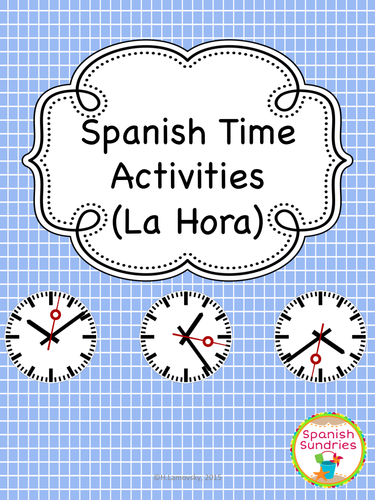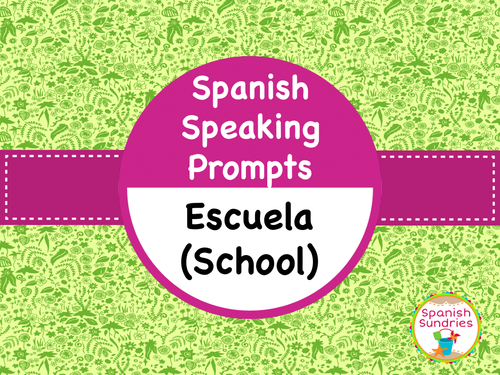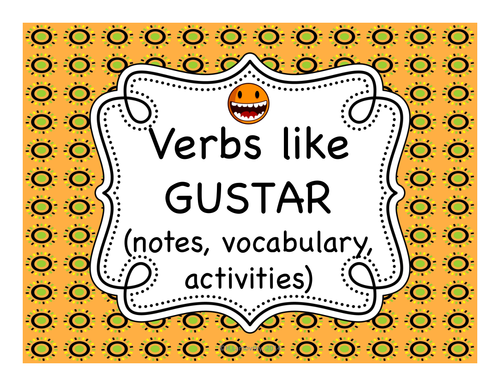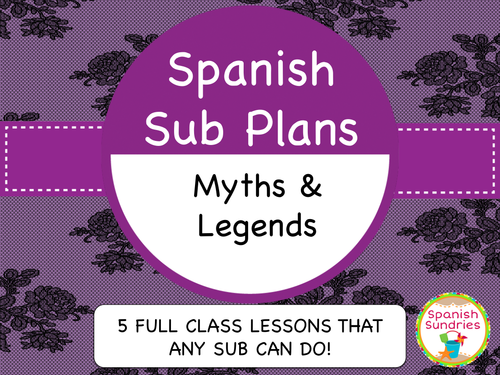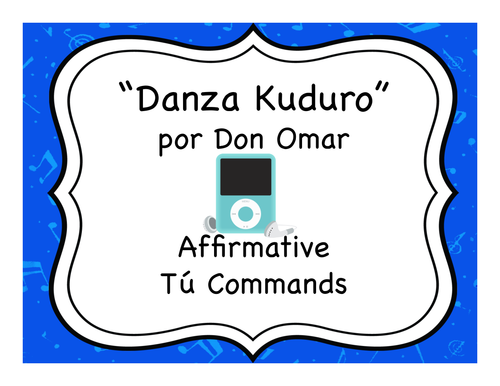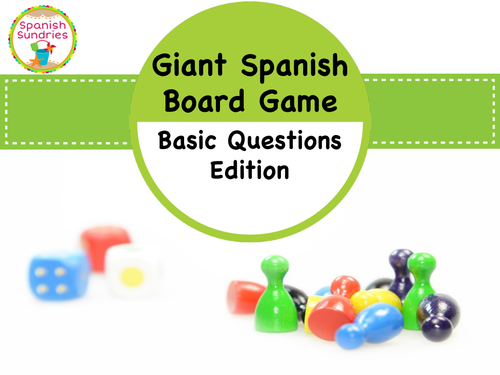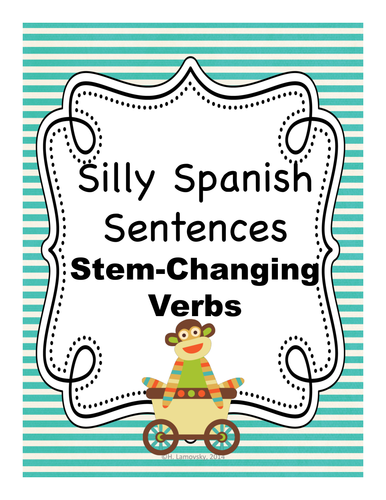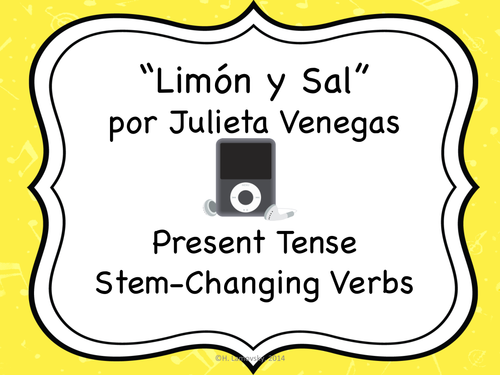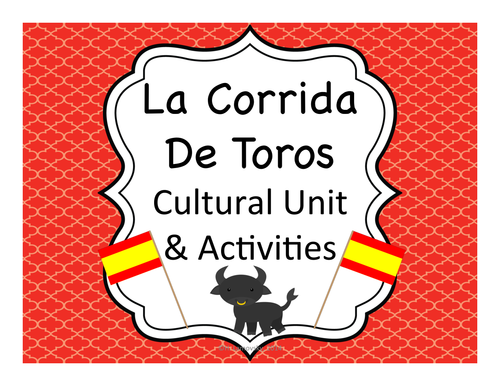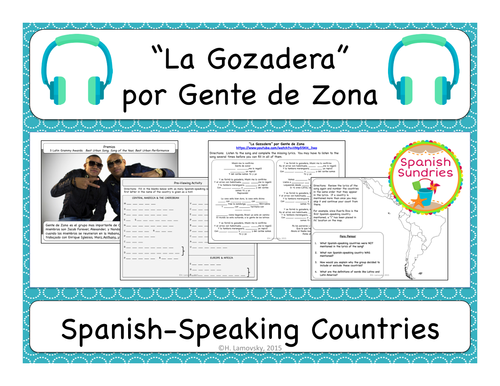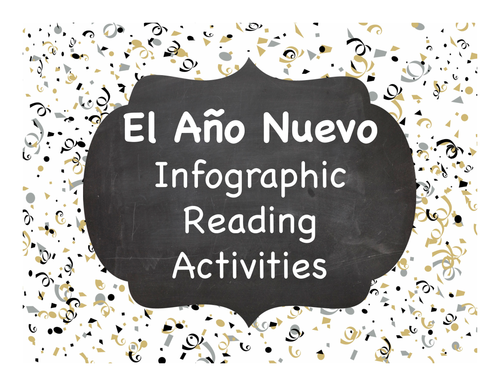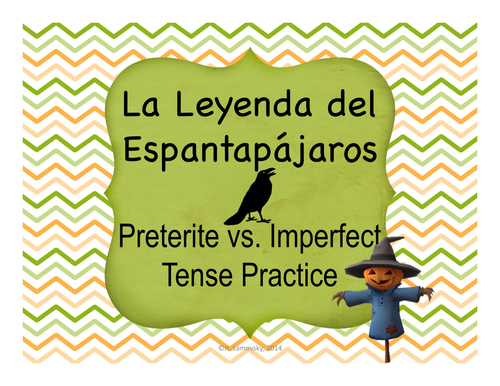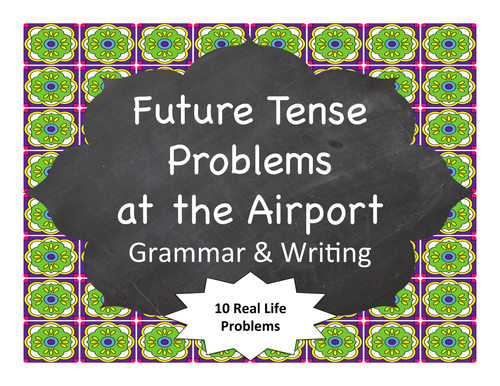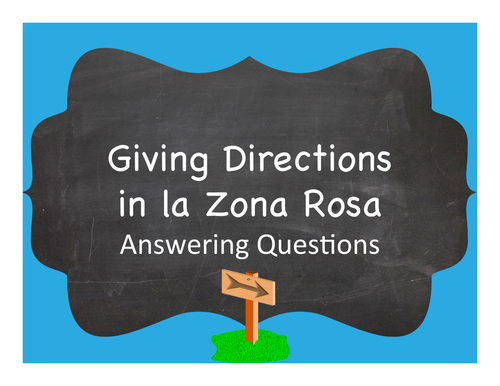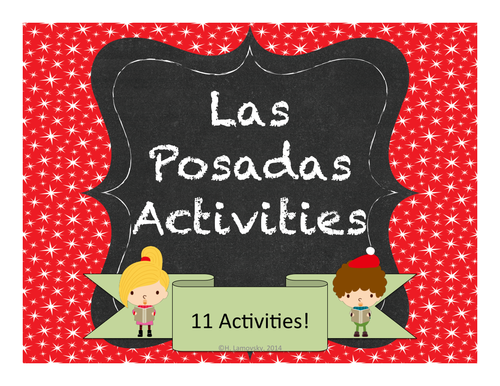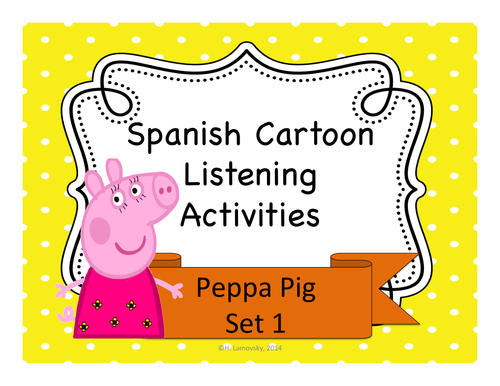
320Uploads
94k+Views
4k+Downloads
Languages

Spanish Time (La Hora) Activities
Are you looking for ways to have your students practice telling at what time things are scheduled in real life situations? This group of activities focuses on just that with the use of authentic materials and real world situations.
The power point notes explain the process of telling time in Spanish and allow students scaffolded, guided practice as they learn.
In the first activity, students will read sentences that describe at what time a students has each class and label that student's schedule accordingly.
In the second activity, students will send written "text messages" to a friend discussing their class times.
In the third activity, students will use real movie listings to decide and explain when the next showing that they can attend will be.
In the fourth activity, students take on the role of an employee at a bus station in Mexico. They must inform customers of the next bus departure for various cities using a real bus schedule.
There are also two sets of clock fold-it clocks (digital and analog) for you to use in practice activities in your own classroom or as part of an interactive notebook.
This product includes:
-Complete notes on telling time with guided practice (power point)
-School schedule time reading activity
-Class time texting activity
-Movie times activity
-Bus schedule activity
-Answer keys for all activities
-Clock fold its

Spanish Speaking Prompts - School (Escuela)
These speaking prompts are designed to move students from asking/answering basic questions in Spanish to responding to increasingly complicated prompts around the theme of Escuela (School).
There are 4 categories of prompts that ask students to move between different levels of communication including the presentation of facts, opinions, feelings, and towards complete openness in social situations.
Category A – Yes or No Questions, Either/Or Questions
Category B – Additional Information Questions
Category C – Expressing Opinions and Feelings
Category D – Situational Speaking Prompts & Extended Response
You may approach these prompts by moving students through them from Categories A-D in a sequential manner, or you may use them as an opportunity for easy differentiation between the various proficiency levels of Novice to Intermediate learners that may be present in your classroom.
Although these prompts have been designed as speaking prompts, they can also be used as writing prompts for individual practice, homework, or assessment.
Ideas for Usage:
-Pair students for one on one practice.
-Form small groups and have students interview a student.
-Invite a guest speaker or native speaking student to your classroom and have students select questions to ask them during a Q&A session
-Have students write additional prompts or variations of existing prompts on the blank cards provided
-Pull 1 prompt from each category for a challenging oral proficiency assessment
-Have students develop role plays based on the situational prompts
This Product Includes
-Guide for Educators
-15 Category A Prompts
-15 Category B Prompts
-9 Category C Prompts
-6 Category D Prompts
-Blank Cards to allow for creation of additional questions if desired

Gustar Like/Dislike Unit
This product includes many resources for you to use to help your students improve their interpretive listening, reading, interpersonal speaking, presentational writing, and grammar knowledge of verbs like gustar and likes/dislikes.
This product includes:
1. Vocabulary list (no definitions) with 30 activity phrases common to teens
2. Vocabulary list (with definitions)
3. Four Bell-Ringer or Exit Ticket activities
4. Note handout covering the grammatical structure of sentences with verbs like gustar
5. Grammar Practice Activities
6. Vocabulary Reinforcement Activity
7. Assessment for reading, listening, and vocabulary recognition
8. Scavenger Hunt style speaking activity
9. SpongeBob Squarepants Themed Writing Activity
10. Assessment for grammar application/writing and vocabulary production
11. Answer keys for assessments

Spanish Proficiency or Placement Test: Intermediate-Low
I developed this assessment as a tool for gathering data as to student's proficiency levels during their third and fourth years of language study in Spanish. This assessment is directly aligned with the ACTFL progress indicators for Intermediate-Low fluency. This assessment addresses all skill areas; Interpersonal Speaking, Presentational Speaking, Presentational Writing, Interpretive Listening, and Interpretive Reading.
This assessment can be used in a variety of ways:
1. As an exit test or final exam for Spanish 3
2. As an entrance exam for Spanish 4
3. As a placement exam for students newly entering your language program from private or out of state institutions
4. As a progress indicator given to students at the beginning, middle, and end of the school year to demonstrate growth
5. As smaller, individual assessments or activities given throughout the course of the school year
This Product Includes:
- Educator's Guide & Instructions for Test Administration
- List of ACTFL Progress Indicators addressed
- Resource Links to ACTFL rubrics and progress indicators
- 6 Activities to assess Interpersonal & Presentational Speaking / Writing
- 4 Activities to assess Interpretive Listening
- 4 Activities to assess Interpretive Reading
- Answer Keys for Listening and Reading Activities
- Answer Keys for Writing activities unless answers may vary

Spanish Sub Plans: Hispanic Myths & Legends
These Spanish sub plans can be carried out by any sub while you are out of the classroom. Even better, you won't have to feel guilty that your students aren't learning while you are gone!
This set includes 5 full classes of lessons based on Hispanic myths & legends that are ready to print & go, require no technology, do not require the sub to produce any Spanish, and can be differentiated for any level of Spanish class.
Each lesson walks students through the interpretation of legends from around Latin America including the legends of La Llorona, El Silbón, Los Duendes, El Basilisco Chilote, and El Cadejo.
Students will work step by step to interpret the legends through a series of activities that ask them to relate the legends to present day, make cultural inferences about the purpose and origin of these legends, and compare these legends to their own culture and others. Each lesson asks students to think about the legend in the larger cultural context as they make observations and consider some thought provoking questions.

"Danza Kuduro" & Informal Commands
These activities are designed to allow students to observe the use of affirmative tú commands in a context that they will find enjoyable and then practice their use. In addition to the grammatical component, this lesson offers cultural information regarding the evolution of the Kuduro style of music and relationship between the Spanish and Portuguese language.
Students will begin by listening to the song "Danza Kuduro" by Don Omar and attempting to fill in missing lyrics in a cloze activity. A link is provided to the song which is readily available on YouTube as well as iTunes.
Students will then use the lyrics of the song to make observations about the formation of both affirmative and negative tú commands in Spanish. Once they have deciphered the pattern, they will move on to an activity in which they will add some moves to this dance by using a variety of regular, stem-changing, reflexive, and irregular verbs to form commands directing someone what to do.
Finally, students will learn a bit about the evolution of the Kuduro style of music and identify some Spanish-Portuguese cognates that can be found in the small portuguese section of the lyrics.
This Product Includes:
-Don Omar Biography (in Basic Spanish)
-The Evolution of Kuduro Music
-Cloze Activity
-Spanish-Portuguese Cognate Activity
-Informal Command Tutorial
-Affirmative Tú Command Dance Move Activity
-Answer Keys for all objective excercises

GIANT Board Game - Basic Spanish Questions
Turn your classroom into a GIANT Spanish board game while helping your students practice basic questions in Spanish.
This product includes 50 printable spaces and both teacher and student instructions for game play. Also included are EDITABLE spaces where you can add additional prompts or questions to target specific units or areas of weakness for your particular group of students.
Set up time is around 10-15 minutes to lay out the board and tape it down.
Spaces are designed in black and white with minimal ink use. Lamination is recommended for extended game play.
Your students will LOVE reviewing for midterms, finals, or just practicing speaking with this floor game.
Questions Include:
-¿Cómo te llamas?
-¿Cómo estás?
-¿Cuántos años tienes?
-¿De dónde eres?
-¿Dónde vives?
-¿Cuántos hermanos tienes?
-¿Qué hora es?
-¿Cuál es la fecha de hoy?
-¿Qué día es hoy?
-¿Qué tiempo hace?
-¿De qué color es ___?
-¿Cuántas personas hay en tu familia?
-¿Dónde estás?
-¿Cuál es tu clase favorita?
-¿Cómo eres tú?
-¿Cómo se llama tu mejor amigo?
-¿Cómo es tu madre?
-¿Qué te gusta hacer?
-¿Qué no te gusta?
-¿Qué comes para el desayuno? almuerzo?
-¿Cuál estación es?
-¿Cuál es tu deporte favorito?
As well as action prompts including
-Count from 1-10
-Name 5 Spanish-Speaking Countries
-Name 5 things in the classroom
-Say the alphabet in Spanish
-Name 3 school subjects
-Name a Latin singer
-and various others

Silly Spanish Sentence Writing Activities - Stem Changing Verbs
Silly Spanish Sentence Activities are a great way to motivate students and spice up your typical boring grammar drills while building vocabulary.
These activities promote both interpretive reading and presentational writing skills. They provide a structure that will help struggling students while at same time allowing more advanced students to add details according to their abilities. This type of self-differentiation is very helpful in classes where students are at a variety of stages in their fluency and language acquisition.
Students will choose 1 word each from a series of word boxes with the goal of creating funny sentences. They will need to apply grammatical concepts like conjugation and sentence structure while at the same time recognizing key vocabulary items. When they have created 10 sentences, they will choose a favorite and write it on the tear-off section of the activity.
This set of Silly Spanish Sentence activities focuses specifically on present tense stem-changing verbs.
This Product Includes:
-Guide for Educators with Tips and Extension Activity Ideas
-O-->UE Verb Silly Sentence Activity
-E-->IE Verb Silly Sentence Activity
-E-->I Verb Silly Sentence Activity

"Limón y Sal" & Present Tense Stem-Changing Verbs
This activity goes along with the song "Limón y Sal" by Julieta Venegas, which is readily available on YouTube and iTunes. In this activity, students listen to the song and complete the missing lyrics. Then, they are asked to locate certain lines of the song, copy them, and manipulate them. The manipulation of the lyrics requires them to use stem-changing verbs in the present tense. Students will practice listening, reading, and writing in this lesson.
Included in this download;
1. Artist Biography (in Spanish)
2. Reading Comprehension Activity
2. Copy of song lyrics with key words removed (Clozeline activity)
3. Lyric Manipulation Activity
4. Reflection Activity
5. Answer Keys

Corrida de Toros & Bullfighting Culture Unit
This unit was created to increase students' cultural awareness of both The Running of the Bulls and the Spanish tradition of bullfighting. Amidst the culture, there are also opportunities for students to apply Spanish vocabulary and grammar concepts in a variety of activities. One of the highlights of this unit is the Corrida de Toros board game which serves as a summative activity to the unit and tests students cultural knowledge.
The readings and activities in this unit can be used with a variety of levels and in a variety of ways. Jigsaws, stations, extension learning, substitute lesson plans, and classwork/homework are just a few ways in which this unit could be delivered.
This cultural unit aligns with the ACTFL indicators for cultural knowledge. There are also activities that align with the Novice or Intermediate indicators for language indicators. Activities are on separate pages so that you can print the ones you like or are most appropriate for your level of Spanish student.
This Product Includes:
1. Usage Guide for Educators
2. Links to Internet and Video Resources that compliment this unit
3. La Corrida de Toros: Overview Reading
4. Reading Schedules & Telling Times Activity
5. Los Corredores Reading
6. Verb Tense Review Activity
7. Giving Advice Activity
8. Las Reglas Reading
9. Affirmative & Negative Commands Activity
10. Los Toros y Sus Matanzas Reading
11. Comparisons of Inequality Activity
12. El Encierro Map & Reading
13. La Plaza de Toros Reading
14. Body Part Vocabulary Review Activity
15. The Controversy Reading
16. Research Activity
17. Student Game Directions
18. Game Board, Pieces, and Cards

Spanish-speaking Country Activities ("La Gozadera")
These activities are meant to help students learn the names and locations of Spanish-speaking countries.
These activities go along with the song "La Gozadera" by Gente de Zona and featuring Marc Anthony. This song is readily available on YouTube and iTunes and a link to the song is referenced.
First students will complete a pre-viewing activity which will ask them to recall the names of Spanish-speaking countries with some supports. Following that, students will read a short biography, in Spanish, of the group Gente de Zona. After viewing the video, they will begin completing the cloze activity which focuses on their interpretive listening skills and ability to hear the names of Spanish-speaking countries within the song. Finally, students will take a closer look at the lyrics of the song and complete a map activity and respond to some culture questions that ask them to think about what it means to be Latino or Latin American.
Included in this download:
- Educator's Guide
- Spanish-speaking country pre-viewing activity
- Artist Biography of Gente de Zona
- Link to the song on YouTube
- Cloze Activity
- Map Activity
- Cultural Questions for Discussion
- Answer Keys for all objective activities

El Año Nuevo Infographic Reading Activities
Do you want to teach students about New Years traditions in the target culture without a boring lecture? Do you always see awesome infographics and you just don't know what to do with them?
This product contains 3 different reading activities to accompany a variety of the infographics available for free on the Internet. Due to their visual nature, infographics are a great way to get students reading interesting, age appropriate content even at a beginner level. The activities included for each infographic also align with the ACTFL goals for interpretive reading at the Novice level.
Your students will be encouraged by how much they can actually understand AND they will be building their interpretive reading skills and cultural competency while they do it!
This Product Includes:
1. Links to 3 different infographics available on the Internet*
2. 3 Reading Activities (1 per infographic)
3. 3 Writing Prompts (1 per infographic)
Infographic Topics Include:
1. Tradiciones de Fin de Año
2. Propósitos de Año Nuevo
3. Los Españoles y el Año Nuevo
*Note: Due to copyright, the actual infographics can not be included with the product, but their direct links can and are*

Spanish Preterite vs Imperfect: La Leyenda del Espantapájaros
This product includes 4 scaffolded activities to accompany the viewing of the short film "La Leyenda del Espantapájaros" (available on YouTube, link provided).
Students will begin by watching the short animated film and answering some basic questions in Spanish about what they see happening.
Students will watch the film a second time, this time focusing on 14 different vocabulary words that students should be able to acquire based on the context of the film. They will then use these 14 words to answer additional questions about the legend.
In the third activity, students are asked to fill in missing parts of an English translation of the legend when given the Spanish script.
In the final activity, students examine the Spanish script of the movie more closely to find examples of the preterite and imperfect tenses and support the author's choice for their usage.
This Product Includes:
1. Link to the film "La Leyenda del Espantapájaros" on YouTube
2. Visual Literacy Activity
3. Predicting Meaning Activity
4. Comprehension Activity (includes film script in Spanish)
5. Preterite vs Imperfect Activity

Spanish Future Tense: Problems at the Airport
In this activity, students are given 10 real life problems that can occur while traveling and are asked to write what they WILL do to deal with the problem. This activity gives students exposure to lots of travel/airport vocabulary and allows for writing practice in the future tense.

"Pura Vida" & Asking/Answering Yes or No Questions in Spanish
These activities go along with the song "Pura Vida" by Don Omar which is readily available on YouTube and iTunes. The video for this song is wonderful and sends a great message about not giving up and working hard to accomplish your goals.
Students will begin by watching the video and responding to some yes or no questions about the video in Spanish. Then, students will listen to the song again and attempt to fill in some of the missing lyrics. Once the missing lyrics are identified, students will work on identifying several lines of the song with the help of a picture dictionary. They will then use these lyrics and change the word order and verb form to create yes or no questions and respond to some of them. Finally, students will write their own original yes or no questions in an exit ticket activity.
These activities are scaffolded, working students through activities that demand less language ability and moving towards activities that demand more use of Spanish.
This Product Includes:
1. Artist Biography (in Spanish)
2. Answering Yes or No Questions (Based on Video)
3. Clozeline Activity
4. Lyric Identification Activity
5. Lyric Manipulation Activity
6. Answering Yes or No Questions (Based on Lyrics)
7. Exit Ticket Activity
8. Answer Keys

Spanish Future Tense & Technology
In this activity, students are given 10 different situations that involve common things that can go wrong with technology (dead cell phones, broken printers, lost passwords, etc) and are asked to tell what they will or will not do next using the Future Tense.
This is a fun way to get students writing about something they are interested in while relating it to everyday problems.

Giving Directions in La Zona Rosa
In this activity, students use a map of La Zona Rosa in Mexico City to give directions from the hotel they are staying in to many of the tourist attractions in the area. Both the map and activity are included in this download. There is also an additional activity to teach map skills and visual literacy.
A possible extension activity would be to have students research one of the 8 tourist attractions mentioned in this activity.

Las Posadas Activities
This series of 11 activities are designed to give students an accurate cultural view of the celebration of Las Posadas while acquiring new vocabulary and using reading skills in the target language.
Students will explore the traditions and celebrations of Las Posadas with cultural information provided on each page. Students will also learn the lyrics to the popular villancico "Pidiendo Posada" and complete activities to demonstrate comprehension and understanding of various cultural, grammatical, and vocabulary related aspects of this song.
The final summative activity asks students to synthesize all of the information they have learned to create an invitation to their own Posada party, create a to do list with things they must do or buy in preparation for the celebration, and complete a drawing of the inside and outside of their house all decorated for the holiday!
This Product Includes:
-Educator's Guide
-Vocabulary Activity
-9 pages that each contain cultural information about the holiday and pertinent vocabulary, a verse of the villancico "Pidiendo Posada", and accompanying questions/activity
-Closing Activity or Assessment
Note: Although some religious beliefs are referenced in the information provided, this activity is appropriate for public school students as well as private. As a public school teacher myself, I am careful with my presentation of religious information so as not to offend any of my students or their families.

Spanish Sub Plans: Festivals of Spain
These Spanish sub plans can be carried out by any sub while you are out of the classroom. Even better, you won't have to feel guilty that your students aren't learning while you are gone!
This set includes 5 full classes of lessons based on various festivals that take place in Spain. Each on is ready to print & go, requires no technology, do not require the sub to produce any Spanish, and can be differentiated for any level of Spanish class.
Each lesson walks students through important and interesting information related to a different Spanish festival and asks them to use higher-order thinking skills, problem solving, and critical thinking skills to understand the culture behind that tradition.
Spanish Festivals in these lessons include:
-La Tomatina (Buñol)
-Las Fallas (Valencia)
-Semana Grande (Bilbao)
-Cristianos y Moros
-Bizarre Spanish Festivals
Students will work step by step to learn about each celebration through a series of activities that ask them to use what they have learned and apply it to the present day, make cultural inferences about the purpose and origin of these traditions, and compare these events to events in their own culture and others. Each lesson asks students to think about the festival in the larger cultural context as they make observations and consider some thought provoking questions.
These lessons are fully aligned with the ACTFL cultural competencies for world language learners and also can be used to address several of the culture themes found on the AP Spanish test.

Peppa Pig Spanish Listening Activities
These activities accompany free episodes of Peppa the Pig in Spanish (Youtube links provided). In each episode, students will listen for and match 8-10 of the most frequently heard words to their English meanings. Then, students will fill in sentences in Spanish with these same missing words. Finally, students will respond to basic comprehension questions, in Spanish, about the episode that also focus on these high frequency words.
Cartoons are the perfect way to get students used to hearing and understanding Spanish. The speech is cartoons is clear and easily understood since they are made for children. The grammatical structures are simple as well, and words are often repeated a number of times. The visuals provided in the cartoon help students to predict meanings and focus in on particular objects and actions.
This product includes:
-Link to Peppa the Pig episodes on YouTube
-39 Activities (3 per eipsode for 13 episodes)
Vocabulary Themes Include:
-Winter
-Play Time
-Colors
-Nature
-Family Members
-Animals
-Modes of Transportation
-Directional Phrases
-Food
-Adjectives
-Common Verbs
-And MUCH MUCH More

